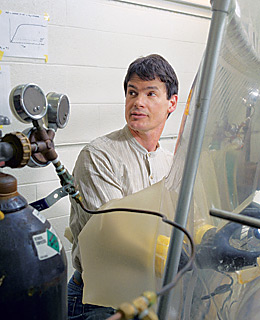
Tullis Onstott
Wondering whether extraterrestrial life exists? Tullis Onstott, 53, has found it—sort of. The fact that the living things he's discovered make their homes nearly two miles below the earth's surface may disqualify them from the extra part of extraterrestrial. But dig them up and fly them off, and there's no limit to the cosmic places they might survive. That's the beauty of the work Onstott, a professor of geosciences at Princeton University, is doing. Until we collect living aliens, he's showing us they're probably there to be found. Scientists once despaired of discovering even simple otherworldly organisms because they assumed that all life should be like earthly life—built around warmth, light and liquid water. In recent years, however, biology has shown itself to be tougher than that. Investigators have discovered organisms—simple ones—frozen in polar ice and thriving in scalding ocean vents.
Experts have investigated less thoroughly the regions deep within the earth—places where living things could establish a safe redoubt. Uncover such critters on Earth, and you would prove that they might exist elsewhere too. Last year Onstott and his team published such a find. After years of dust and dirt, piggybacking off gold miners in South Africa, they identified self-sustaining bacteria living in rock deep below the surface that draw their energy from chemicals produced by the radioactive splitting of water, essentially feasting on hydrogen and sulfur compounds. So when we do finally uncover the first alien life-form, you may get the sense that you've seen it before.